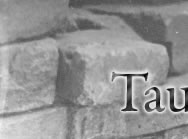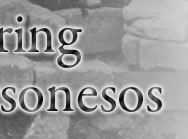| Report of the Ural State University's excavations in Chersonesos, in the Port Quarter, in its south-east area in 1974 |
| Year: 1974 |
|
Author
Romanchuk A. I.
|
|
Description
1974 excavations were the continuation of systematic works in the Port Area, which had been started by the Joined Team in 1963. In contrast to the previous years, they were made in one area only, in the south-east. The works continued from July 10 to August 20, by undergradute students of Ural State University, supervised by the head of the Crimean Expedition candidate of history A. I. Romanchuk.The area excavated in 1974 was smaller than in previous years. Firstly, they have to refuse working inrooms 131 and 132, as well as in the so-called courtyard near 1963 Church. The excavations stopped there as they threatened the preservation of the mediaeval church. The necessity of having a possibility to remove soil from the area also forced to stop excavations of 15th transverse street. Only cleaning of drain gutter was made there. The layers studied in rooms 137, 135, 133 and on the territor of the sidestreet were mainly from the late Roman period. The only exception is materials from a pit in room 137, which dates from the twelfth and thirteenth century. 1974 excaavtions in the south-east area of the ancient city unearthed layers from the late Roman period. In course of them, a large collection of red slip pottery from the first centuries AD was obtained. The presence of constructions from the fourth to the eleventh century was fixed. These works were caused by the citizens' care of the sanitary state of the city. There were 5 chronological periods of the building and systematic repairs of drain gutters, which is an evidence of non-stopped work by the city dwellers and relatively high urban culture. NPTC archive. File no. 1721.
|





